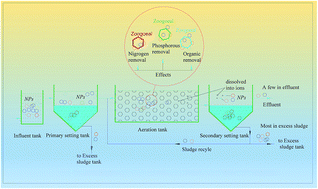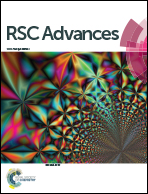Fate and transformation of nanoparticles (NPs) in municipal wastewater treatment systems and effects of NPs on the biological treatment of wastewater: a review
Abstract
Many types of nanoparticles (NPs) have been reported to be toxic to organisms. Wastewater treatment plants are among the important pathways for the migration and transformation of NPs in the environment. Based on a summary of the toxicity of NPs to microorganisms, this review discusses the advances in the fate and transformation of NPs in wastewater treatment plants (WWTPs) and the impacts of NPs on the biological treatment of wastewater. These NPs primarily include Ag NPs, Cu NPs, CuO NPs, ZnO NPs, TiO2 NPs, Al2O3 NPs, SiO2 NPs, carbon nanotubes (CNTs) and magnetic NPs. This review observes that the different properties of these NPs result in significant differences in the fate, transformation, antimicrobial activities and effects on biological wastewater treatment. Although many studies have been undertaken in this field, more studies are needed to address the adverse effects of NPs on organic and nutrient removal, as well as their toxic mechanisms.

- This article is part of the themed collection: 2017 Review articles


 Please wait while we load your content...
Please wait while we load your content...